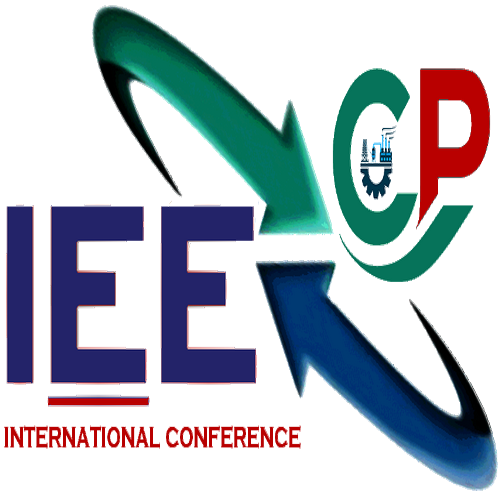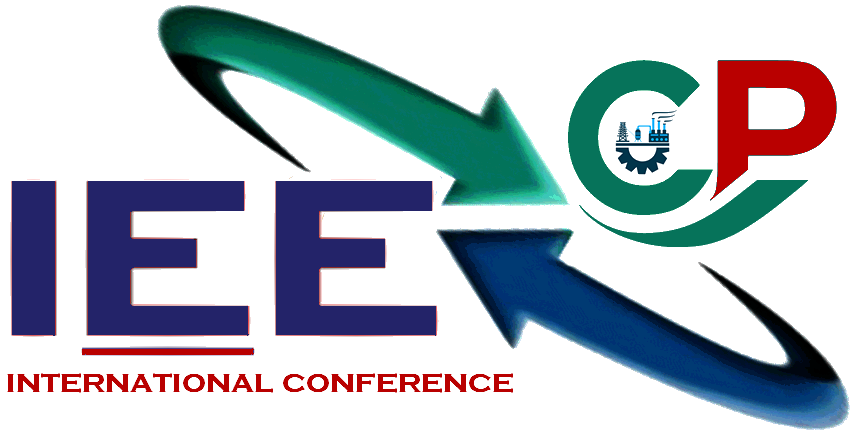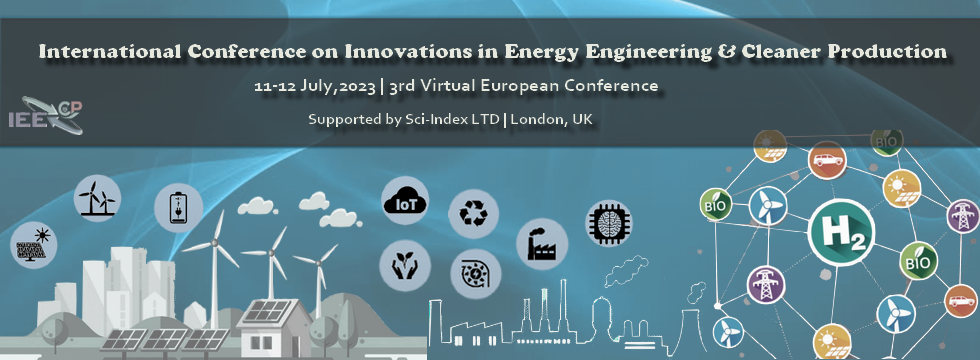IEE CP’21 will bring out dynamic talk presentations from the best and brightest academic and industrial individuals in the energy & cleaner production field; providing insights on current and future trends. All keynote speakers will be announced soon !
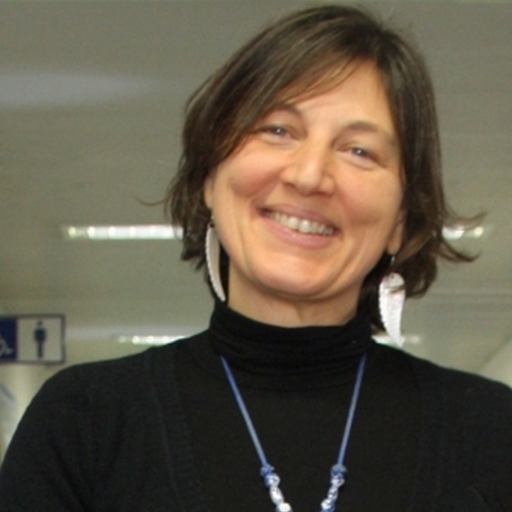
Dr. Francesca Deganello
Istituto per lo Studio dei Materiali Nanostrutturati
Consiglio Nazionale delle Ricerche
Palermo, Italy
Energy and environment: important role of chemistry in meeting the new demand for sustainable solutions
Sustainability has been worldwide recognized as the only possible bridge to the future, and chemistry has to be rethought in this new perspective. Materials production through chemical methods needs to be designed through sustainable actions, from the choice of primary resources to the efficiency of the synthesis process, from the functional performance of the materials to their present and future impact in society, environment, and economy. Apparently, this is an unaffordable goal. This presentation will give a chemistry perspective on sustainable materials for energy and environment, highlighting some little steps to take in the way toward sustainable development and discussing how chemistry can help to reach sustainable development goals, such as responsible consumption and production (n°12), affordable and clean energy (n°7), clean water and sanitation (n°6), sustainable cities and communities (n°11) and quality education (n°4).
sustainability, sustainable development goals, materials synthesis, energy and environment, waste precursors, chemistry, mixed oxides, solution combustion synthesis
- It is evidenced how Chemistry can play an important role in the way toward sustainable development goals.
- Some little steps are discussed to make chemical design of materials more sustainable.
- Use of waste resources, knowledge of the synthesis-properties relationships, efficiency and respect for people and the environment are key factors in the transition to sustainability.
Dr. Francesca Deganello is researcher at CNR-ISMN Palermo (Italy) since 2001. In March 1996 she got the Chemistry degree at the Università degli Studi di Palermo (110/110 cum laude). In February 2002 she obtained her Ph.D certificate in Chemical Sciences at Università degli Studi di Palermo, Italy. She is involved in several national and international projects on the preparation and characterization of sustainable nanomaterials, especially mixed oxides with perovskite-type structure for solid oxide fuel cells operating at intermediate temperatures, for metal-air batteries, and for the degradation of pollutants in the air and in industrial wastewater. Dr. Deganello is the author of 37 peer reviewed scientific publications, 10 structures in the ICDD database, and about 60 oral, poster communications and invited presentations. She is also involved in outreach activities for schools and public .

Dr. Kamiel Gabriel
Faculty of Engineering and Applied Sceince
Ontario Tech University
Oshawa, ON, Canada
Hydrogen for Greening Production in Heavy-Emitter Industries
Today, hydrogen is enjoying a strong momentum worldwide as the fuel of the future, and is expected to have a considerable role to play in securing a clean energy future. Nations of the world have been adopting national roadmaps to employ hydrogen for their transition plans to low-carbon future. However, it remains a challenge to find clean energy sources to drive the hydrogen production process and divest it from the fossil-based production technologies. Currently, demand of hydrogen is dominated by heavy industries including oil and gas, steel, cement, glass and fertilizers manufacturing, among other heavy emitters of CO2. This demand is met by reforming or gasification of carbon-based fuels (e.g., methane, coal, and biomass). In this talk, innovative thermochemical Copper-Chlorine (Cu-Cl) hydrogen production technology, developed at Ontario Tech University, is introduced as a reliable and scalable technology for clean Hydrogen production. The Cu-Cl hydrogen cycle can operate on recovered waste-heat (approximately 500°C) from industrial processes. In this talk, Prof. Gabriel will highlight the potential integration of this innovative technology in steel and cement industries in Canada and elsewhere in Europe, China and the Middle East. This process which utilizes waste/process heat has the potential to significantly cut of CO2 emissions from such polluting industries. A case study on coupling this technology with a cement plant in Ontario will be presented.
Hydrogen, thermochemical Cu-Cl cycle, energy recovery, cement, steel
- TBA.
Dr. Gabriel is an elected member of the Canadian Academy of Engineering and the former A/Deputy Minister of Research at the Ontario Ministry of Research and Innovation. In 1990, Dr. Gabriel attended the prestigious, MIT-founded, International Space University and received a diploma in Space Sciences. For over 14 years, Dr. Gabriel led an international team in the research efforts spearheaded by NASA to design, test and operate a thermal management system for the International Space Station (ISS). In 2004, Dr. Gabriel was invited to lead the development of the research and innovation ecosystem in a newly established university. He assumed the position of the founding AVP research and graduate programs at Ontario Tech University (formerly the University of Ontario Institute of Technology) in Ontario, Canada. Under his leadership, Ontario Tech University was ranked as one of the top Canadian higher learning institutions in the categories of innovation and leaders of tomorrow .
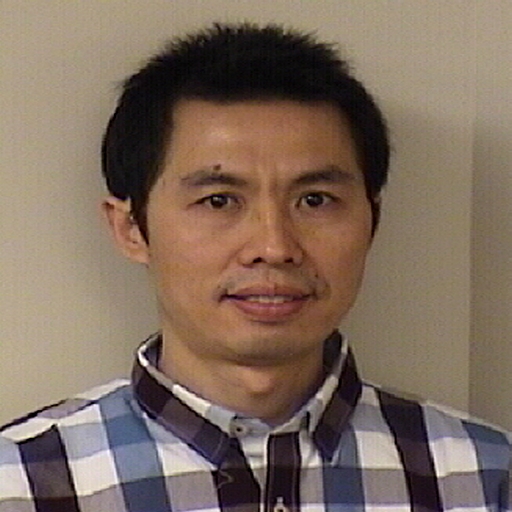
Dr. Feng Lin
Natural Resources Canada, CanmetENERGY Research Centre
One Oil Patch Drive, Devon, Alberta, Canada
A cleaner process for heavy oil extraction from oil sand using a bio-based solvent
Non-aqueous extraction (NAE) at ambient conditions provides many advantages over the current commercial hot water method for processing mined oil sand, but several challenges remain largely due to the use of a hazardous conventional organic solvent (COS) such as toluene or heptane. In this work, a cleaner, more sustainable NAE process using a low-cost, eco-friendly, bio-based solvent, was developed. Results indicate that the bio-solvent extraction could achieve oil recoveries of close to 100% for different grades of ores, the highest yield compared to those often obtained using a COS (toluene or heptane). The total water and solids contents in the supernatant of the extract were very low and as comparable to those extracted using toluene. Importantly, the quantity of residual bio-solvent in the sand after simple evaporation was limited to a level significantly below the regulation target for a COS. The application of bio-based solvent in NAE could dramatically reduce the safety, environmental, and health concerns associated with the use of a COS. Equally important, this bio-solvent extraction inherits all the advantages of NAE, e.g., dry tailings, ready for land reclamation, lower carbon footprint, and ability to efficiently recover low-grade and oil-wetted ores.
Bio-based solvent, Solubility, Oil recovery, Advanced separation, Sustainability.
TBA.
Dr. Feng Lin obtained Ph.D. and M.Sc. degrees, both in Chemical Engineering, from the University of Alberta and the University of Waterloo, Canada, respectively. He is currently a Research Scientist at CanmetENERGY research centre in Devon within the department of Natural Resources Canada. His research expertise covers interfacial transport phenomena, colloids, wetting and adhesion, heavy petroleum production, minerals processing, polymers and nanomaterials synthesis, and renewable energy engineering. To date, Dr. Lin has managed 10 projects with more than 2 million dollars funding, supervised 8 technologists and postgraduate students, and authored about 40 referred journal publications and government-wide scientific reports, in relation to the fundamental research and scale up of cleaner oil recovery and minerals processing technologies. His passion to research and technology development is to be one of many contributors for searching cleaner solutions and materials to fuel our homes, societies, and economies.
TBA.
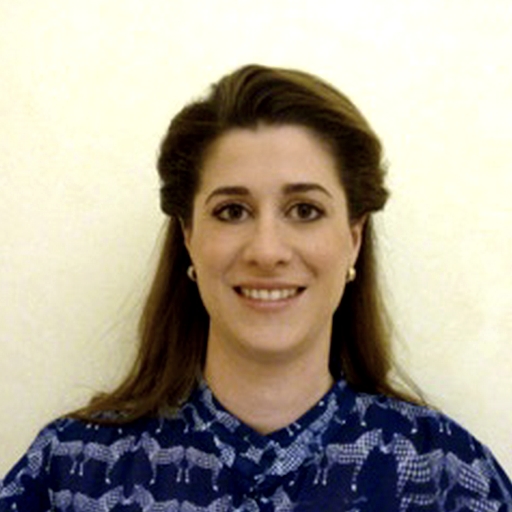
Dr. Roselita Fragoudakis
Department of Mechanical Engineering
Merrimack College
North Andover, MA, USA
A Review of Fiber Reinforced Plastic Laminated Structures for more Efficient and Clean Transportation
Laminated composite materials are a lighter and of customizable flexibility material alternative for road vehicles. FRP laminated structures in the automotive industry may be an ideal solution for lighter and safer vehicles, while the weight reduction is also associated with lower fuel emissions. In this paper, we investigate the behavior of laminated FRP structures under bending and more specifically how the number of layers and stacking sequence of the structures affect their performance. A theoretical approach to the design of such structures, more specifically laminated FRP beams under cyclic bending, is presented in the first part of the review. The design of FRP laminates is based on Classical Lamination Theory (CLT) and interactive failure theories. The second part of the review examines the potential of FRP laminated structures to become the host of piezoelectric fibers and be used as energy scavenging devices, while maintaining their desirable and tailored stiffness and high performance, at a low weight. Two examples where laminated FRP beams are used as the host of piezoelectric layers to produce energy scavenging structures are presented. These examples examine beam structures under cyclic loading where the fiber stacking sequence allows for tailoring of the degree of deformation under bending. The deformation affects the amount of energy produced as the electromechanical behavior of the piezoelectric layer is guided by the mechanical behavior, more specifically deflection under a bending moment, of the FRP structure. The fiber material in each example addresses a different possible application area: E-glass fibers for applications where moisture effects may be a concern, and natural fibers in those where moisture effects are negligible.
Fiber Reinforced Plastics (FRP), Classical Lamination Theory (CLT), Interactive Failure Theories, Piezoelectric Fibers, Energy Scavenging.
- Fiber Reinforced Plastics (FRP) can be used as individual laminae (layers) in building laminated structures of customizable weight and stiffness. These properties can be affected by the volume fraction of fibers embedded in the polymer matrix, the fiber orientation in each lamina, and the way the laminae are stacked to build the laminate, i.e. the stacking sequence. Due to their low weight and customizable stiffness FRPs become excellent material alternatives to metals in many product applications. Leaf springs are one of these products that has seen the introduction of FRP laminates as a replacement to steel. The performance of leaf springs is one of the main design requirements, and therefore the leaf spring laminates should be designed in such ways that they can withstand failure for a large number of fatigue cycles, while they offer a lower weight compared to steel.
- FRP laminates fail differently than metals, as failure may be observed in one lamina (first-ply failure) without necessarily terminating the operational capacity of the laminate. As a result, two design requirements become important in the manufacturing of FRP laminated leaf springs: a) an optimum stacking sequence that would allow the leaf spring to have desirable stiffness, strength, and performance, and b) a stacking sequence that is designed in such a way that first-ply failure can be predicted. To decide on such stacking sequence an investigation of the effects of fiber orientation under bending (the main loading condition in leaf springs) is necessary and can be performed using Classical Lamination Theory and Failure Criteria applicable to orthotropic materials, such as FRPs.
- Energy harvesting and scavenging devices are becoming more and more a necessity in our everyday lives as alternative sources of energy become an environmental requirement for our planet. Choosing the loading of a laminated beam with embedded piezoelectric fibers to resemble loading of a leaf spring with stress ratios between R= 0.2 and 0.4, and fiber orientations selected and optimized among a general stacking sequence, cross ply and angle ply to maximize stiffness. At the same time, the piezoelectric fiber layers minimize the effect on stiffness while minimizing deflection. Likewise, these fibers could be activated through the application of electric field to increase or decrease the stiffness of the beam.
- A comparison of the behavior of E-glass fiber/epoxy and Hemp fiber/epoxy laminated beams reinforced with piezoelectric fibers in laminated beams under bending strain and deflection suggests that energy harvesting potential is maximized while failure and damage accumulation remain at low levels. However, the higher moisture absorption of Hemp fibers constitutes them less applicable in environments of high moisture.
Roselita Fragoudakis is an Assistant Professor in Mechanical Engineering at Merrimack College in North Andover, Massachusetts, USA. Her research is on materials. Dr. Fragoudakis has worked on a comparison of steel and Fiber Reinforced Plastic (FRP) applicable in heavy duty vehicle suspension systems. She has conducted experimental and computational analysis on Lateral Diffused Metal Oxide Semiconductor (LDMOS) packages and the dielectric properties of polymers. Currently she directs computational analysis of fiber orientations around geometric discontinuities. Additionally, she investigates ethical dilemmas in the innovative technological advances in her field and has created a course exploring the ethics of innovation and matters of intellectual property. Dr. Fragoudakis has served as a reviewer on multiple journals and periodicals, including the International Journal of Fatigue and Mechanics of Advanced Materials and Structures.
TBA.

Dr. Talieh Rajabloo
IMO-IMOMEC, Energyville II
University of Hasselt
Genk, Belgium
Decarbonization for the energy transition and green production
A considerable part of the fossil CO2 emissions comes from the energy sector, in which the main parts are released through energy-intensive industries, namely metal production, chemicals, and manufacturing. Hence, decarbonization of industries is considerably important beside the other sectors such as net zero buildings and transformation. The main concept of this speech will cover renewable energy/resources solutions after looking into potential classic decarbonization. First objective is about the upgrading of the existing processes, equipment, and plants besides implementing the heat recovery/integration based on the innovations toward reducing the energy requirements and efficiency increments. Then, the renewable resources are going to be introduced. Moreover, energy production and conversion methods, feedstocks, carbon capture and storage, and electrification will be discussed.
Overall, both classic and innovative renewable attempts are required to reach the deep decarbonization targets. At the end, the objectives are going to be expanded toward chemical industries by introducing the potential technology implementation at different subsectors. For this purpose, the assessed roadmaps and pathways will be discussed further. The primary research results of my current study reveal that although all of the inventive suggestions are not available at an industrial scale or are not economically viable yet, they will play a crucial role in the energy transition at upcoming decades.
Industrial decarbonization, energy intensive sector, Renewable energy and resources, CO2 mitigation.
- Innovative pool boiler design for Organic Rankine Cycles (ORC) – Geothermal heat resources, waste heat conversion and solar based ORC plus the investigation of working fluid stability
- Simulation of refinery and petrochemical plants followed by economical calculations
- Detailed design of different heat exchanger types via PYTHON and simulation at Aspen software
- Investigation of various (petro-)chemical plants and refinery units for possible decarbonization implementation
- First place for innovative research project idea for improving access to affordable and clean energy _ YEAR ANNUAL CONFERENCE 2018 – FROM IDEA TO IMPACT
Experienced senior researcher in the field of industrial decarbonization with broad experience in fulfilling and managing research and development projects. Specialist in the field of renewable energies with a demonstrated history of working more than 10 years, on process design, decarbonization research and energy conversion. Skilled in Aspen Plus, Power Plants, Process simulation and design, Heat Exchangers, petrochemicals processes, Python, and scientific publications. Ambitious research professional with a Doctor of Philosophy (PhD) focused in Mechanical Engineering for systems of energy from University of Brescia. Background in Chemical engineering and process design. Able to work effectively with scientists and engineers of multiple disciplines.
TBA.

Dr. Maria Laura Tummino
Intelligent Industrial Technologies and Systems for Advanced Manufacturing (STIIMA)
Italian National Research Council (CNR)
Biella, Italy
Lignocellulose as a fundamental resource for a sustainable development
Nowadays, the topic of environmental preservation and remediation plays an important role within the activities of the scientific community. Indeed, the procrastination of effective measures to mitigate the environmental damages caused by human activities is no longer possible. In particular, the use of non-fossil substances should be promoted for different reasons: to reduce the environmental disequilibria of the areas involved in the fossil fuel extraction; to decrease the impact of emissions and by-products related to the industrial transformation of fossil-based products; possibly, to exploit biomasses as sources of organic carbon with net zero carbon emission. As regards the type of biomass, herein, a focus on the use of lignocellulose biomass (LCB) will be presented, in particular when it is in the form of waste, often non-correctly disposed or incinerated, representing a biohazard. Waste-LCB are low-cost, easy-available and green raw material. Despite of the variability among different lignocellulose biomasses, in general, they present convenient chemical-physical features that make them suitable compounds for several purposes. An overview of the multiple functions of lignocellulose biomass in the broad field of green chemistry and green catalysis will be explored. Thanks to the versatility of LCB, it has found application as an adsorbent for aqueous pollutant removal, as a precursor of bio-carbons with multi-purpose applications and reinforcing agent for plastics and construction materials. Within the catalysis field, LCB can be the substrate of catalytic transformation, when their constituting biopolymers (cellulose, hemicellulose, lignin) are converted to platform molecules and strategic building blocks, which can substitute some petroleum derivatives for the production of biochemicals and biofuels, in a perspective of lessening the petroleum dependence. Strong efforts have to made to make this kind of processes sustainable, i.e. the employment of heterogeneous catalysts able to catalyze one or multi-step sequences, as well as the choice of solvent that, in most of the cases, plays a significant role for the reaction evolution. LCB can be considered also as a precursor for humic-like substances, isolated from waste-LCB, which are photocatalytically active compounds, able to degrade water contaminants under light irradiation, through the production of excited species and whose activity is strictly related by their origin and chemical structure. Lastly, LCB has been recently considered also as a support for metal/metal oxide catalysts and in other high-technological applications. Given the wide scenario involving lignocellulose-based compounds, this presentation is aimed to propose food for thought about a multifunctional approach on the valorization of waste-LCB for an eco-sustainable development
Lignocellulosic biomass, waste valorization, environmental remediation, biorefinery.
- From a glance on the actual connections among economics, society and environment, the scientific and technological development must follow a “green” pathway.
- Lignocellulose biomass is a sustainable, renewable, ubiquitous feedstock to be employed in various sectors of circular chemistry.
- A special attention is paid to lignocellulose as a suitable resource for environmental remediation and catalytic transformations.
Maria Laura Tummino is a Permanent Researcher at STIIMA Biella of the Italian National Research Council. She received her Master’s Degree in Industrial Chemistry in 2013 and the PhD in Chemical and Material Sciences in 2017 at Università di Torino (North-West of Italy). Maria Laura has devoted her career to green chemistry research, developing different materials for energy and environmental remediation. Her research was focused on photocatalysts for water depuration, biomass-based adsorbents for organic and inorganic aqueous pollutant removal and cathodes for electrochemical devices. She has combined the basic research on national and international levels with job experiences in different companies. She is (co-)author of more than 30 works (papers, congress presentations and publications in a database) and she is involved in scientific dissemination projects and outreach events.
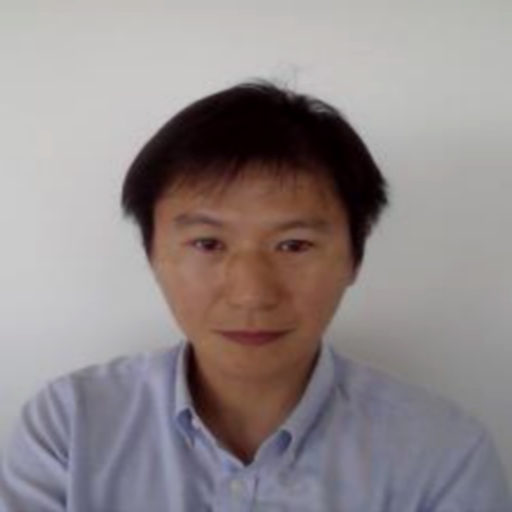
Dr. Keisuke Horiuchi
Thermal Fluidic Systems Research Department
Research & Development Group
Hitachi-shi, Ibarakiken, JAPAN
Cooling Tehnologies in Power Electronics
In this keynote speach, we discuss the cooling technologies in the field of electric power train system. Specifically, we will review and focus on technological trend driven by the needs of high-power density for hybrid electric vehicles and railway system.
In case of the electric vehicles, the liquid-cooling has been the main cooling method. It is well-known that the thermal interface material is the bottleneck in reduction of thermal resistance of the liquid-cooling system. While the development of thermally conductive grease is one approach to solving this problem, another approach is to replace the grease with other materials. A direct-water-cooled power module is one of the alternatives to a conventional power module. It uses solder as the interface between the insulating substrate and the heatsink. We describe the effects and its technological needs of the direct-water-cooled power module.
On the other hand, railway sysytem is more conservetive due to the fact that requirement of reliability and stable supply chain (de facto standard structure) is higher, so mature cooling method with thermal grease is the base trend. Because higher eletcric power (both current and voltage) is needed for traction converter of railway system comparing to electric vehicles, the size and number of power module is bigger. This results in heat spreading strategies are the key issues.
Both electric vehicles and railway systems, product size and weight reduction will be the future trend of its development. For that, we will consider what will happen to make high voltage parts and low voltage parts gets colser in terms of noise and heat exchange. By learning what engineers cared in the past, we will recall the design rules for futher miniaturizaion of the products .
Power Electronics, Inverter, Traction Converter, Electric Vehicles
TBA.
Keisuke Horiuchi received the M.E. and Ph.D. degree in Mechanical Engineering from Hokkaido University (Japan) and Washington State University (U.S.A.), in 2000 and 2005, respectively. He has been belonging to Hitachi, Ltd. since 2005 and currently works as an unit leader senior researcher for thermal fluidic systems research department in research and development group of the same company. Until now, he experienced thermal design of various products such as liquid-cooled laptop computers, servers, and power electonics of electric vhecles, railway systems, and uninterruptible power supply for wind tirbines. He joined several societies and served as a board members a few years in mechanical engineering filed as a member of JSME, ASME, and HTSJ.
TBA.

Prof. Vaidotas Kažukauskas
Institute of Photonics and Nanotechnology
Vilnius University
Vilnius, LITHUANIA
Commercial Activities in the Field of Organic Photovoltaics and Underlaying Fundamental Physical Phenomena of Charge Transport
The situation and tendencies of organic nano-photovoltaics will be reviewed, starting from the underlying physics up to the current achievements and perspectives of commercialization. The noticeable advances in the efficiency of the organic PV took place recently. However, the first commercialization attempts failed because of the poor business strategy. Nowadays several institutions are competing in the field, exploring physical and engineering solutions. The prototype devices were already announced. Nevertheless, the commercial success will depend also on their popularity among end-users, and the commercial management.
Microscopic charge transport is of primary importance in organic material and device engineering, as it determines macroscopic material parameters, conditioning device efficiency. Due to the hoping nature carrier mobility is one of the main factors limiting charge transport in disordered organic materials. Thus, understanding of the fundamental transport properties is a must for the device engineering.
We will demonstrate that in materials and structures promising for organic and hybrid photovoltaics carrier transport is influenced in a complex way by the light-, electric field- and thermally- stimulated mobility and trapping, depending on the excitation. These complicated phenomena can be discriminated by sophisticated analysis and complementary experimental methods. To correctly address these issues, distribution of the density of transport states has to be taken into account. We will also demonstrate that device degradation is closely related to modification of the microscopic charge transport.
Organic Photovoltaics, Charge Transport, Commercialization
- The situation and tendencies of organic nano-photovoltaics are to be reviewed, starting from the underlying physics up to the current achievements and perspectives of commercialization.
- Microscopic charge transport properties and their essential impact on macroscopic device characteristics will be analyzed.
- In organic and hybrid photovoltaics carrier transport is influenced in a complex way by the light-, electric field- and thermally- stimulated mobility and trapping, depending on the excitation.
- To analyze these phenomena, distribution of the density of transport states has to be taken into account.
- We will also demonstrate that device degradation is closely related to modification of the microscopic charge transport..
Dr. Habil. Vaidotas KAŽUKAUSKAS is a Professor at the Faculty of Physics of Vilnius University, Lithuania. He was awarded Dr. Habil. degree in 1999. The topics of his research work are carrier transport, generation, recombination and trapping phenomena in advanced materials and structures for (opto-)electronic and photovoltaic applications. Prof. V. Kažukauskas is/was involved as a team leader into the six large-scale international projects and other numerous projects. He was awarded the National Science Award of Lithuanian Republic, the National Science Award for the Distinguished Scientist, the Science Award of the Rector of Vilnius University and others. V. Kažukauskas has more than 380 publications, had delivered more than 60 invited lectures at the prestigious international conferences, and authored three textbooks .
TBA.

Dr. Man Pun Wan
School of Mechanical and Aerospace Engineering
Nanyang Technological University
Singapore
Model Predictive Control for Intelligent Building Energy Management
The building sector consumes over 30%, with an annual growth rate of 1.3%, of global final energy and is responsible for nearly 40% of global carbon emissions. Building energy efficiency harbours enormous potential as a major contributor to global carbon footprint reduction and urban sustainability. In this context, World Green Building Council announced the Net Zero Carbon Buildings Commitment of achieving net zero carbon operation for buildings under their control by 2030 and all buildings by 2050. Advances in building energy management systems (BEMS) offer significant potential to improve building energy efficiency and occupant well-being. Current BEMS are mostly based on reactive control (e.g., proportional–integral–derivative control), which lacks the level of intelligence needed to handle challenges such as increasing demand for occupant’s well-being and the proliferous adoption of multiple energy systems (e.g., renewable energy and energy storage) in buildings. Empowered by the increased connectivity and access to diverse data in buildings brought by emerging digital technologies (e.g., internet of things (IoT), wireless communication network and cloud/edge computing), adopting more sophisticated building energy management solutions is expected to be a major path to achieve building energy efficiency and carbon footprint reduction goals. Model predictive control (MPC) and data-driven approaches (e.g., machine learning (ML)) are widely identified as key technology enablers e.g., International Energy Agency (IEA) through its global initiatives of IEA-EBC Annex 67 Energy Flexible Buildings and Annex 81 Data-Driven Smart Buildings. This talk presents our research work on the development and application of MPC as well as ML-based MPC for building energy management. The key feature of MPC is that it exploits a predictive building model for predicting future building states and, subsequently, performing optimal controls based on the predictions. We proposed a multi-objective MPC scheme for coordinated control of multiple building services (air-conditioning, dimmable lighting and automated shading). The multi-objective MPC can optimize these multiple building services simultaneously and achieve the overall optimum of energy efficiency and human comfort in buildings. To further enhance the adaptability of MPC for building energy management applications, we proposed two novel MPC schemes incorporating ML, i.e., adaptive ML-based MPC and ML-based approximate MPC. The key feature of adaptive ML-based MPC is that it employs an adaptive ML-based model as the predictive building model. The ML-based approximate MPC employs a ML model to approximate the control laws of MPC, then, uses the ML model to replace MPC for building control. The control-oriented building modelling, optimization formulation, control implementation in real buildings (a lecture theatre, an office and laboratory test facility) as well as experimental results of the three proposed MPC schemes will be presented and discussed. Finally, open problems and our ongoing/future research efforts are discussed.
Model Predictive Control, Building Energy Management, Machine Learning, Energy Efficiency.
- We proposed a multi-objective MPC scheme for coordinated control of multiple building services (air-conditioning, dimmable lighting and automated shading) with simultaneous optimization to achieve the overall optimum of energy efficiency and human comfort in buildings.
- To further enhance the adaptability of MPC for building energy management applications, we proposed two novel MPC schemes incorporating ML, i.e., adaptive ML-based MPC and ML-based approximate MPC.
The control-oriented building modelling, optimization formulation, control implementation in real buildings test beds as well as experimental results of the three proposed MPC schemes will be presented and discussed.
Dr. Wan is currently an Associate Professor in the School of Mechanical & Aerospace Engineering at Nanyang Technological University. Prior to joining NTU, he was an Assistant Professor of Mechanical Engineering at Kyungpook National University, Korea. His research interests cover aerosol sciences, building energy, smart buildings, indoor environmental quality, catalytic oxidation systems and numerical simulations. Dr. Wan led numerous government- and industry-funded research projects ranging from fundamental studies of fundamental thermos-fluids sciences, aerosol sciences and impacts of indoor environmental quality on occupant cognitive function. He has also been working on development of novel green building technologies such as high-performance Cool materials for buildings and pavements, advanced building control and automation systems, integrated dimmable lighting and dynamic shading system, chilled ceiling system and other technologies for energy efficiency and occupant well-being. Dr. Wan has published over 100 international refereed journal and conference articles and is inventor of 3 patents. He is a member of American Society of Mechanical Engineers (ASME), American Chemical Society (ACS) and American Society of Heating, Refrigerating and Air-Conditioning Engineers (ASHRAE) .
TBA.
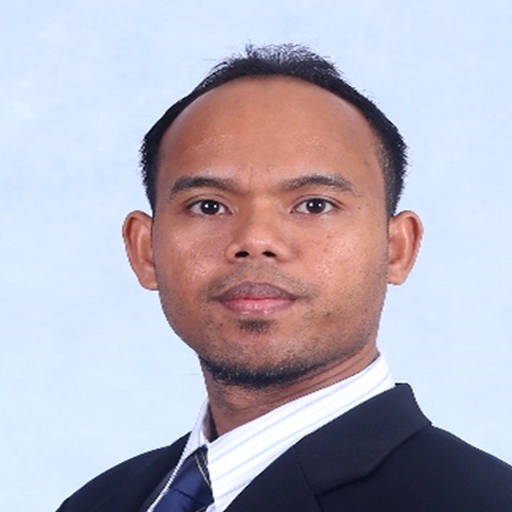
Dr. Mohd Hasmizam Razali
Faculty of Science and Marine Environment,
Universiti Malaysia Terengganu
Kuala Nerus, Terengganu, Malaysia
CO 2 photo-reduction into fuels using TiO 2 based photocatalysts
Carbon dioxide (CO2) emission from fossil fuel utilization poses a potential thread to global climate. Recent development in CO2 reduction opens up new possibilities of utilization of CO2 as a carbon feedstock for fuel generation and commodity chemicals. In this research, TiO2-based photocatalysts have been extensively investigated for the CO2 photoreduction into hydrocarbons in aqueous solutions under environmental conditions to understand their reduction activity and selectivity. The physiochemical properties of the photocatalysts were characterised by X-ray diffraction (XRD), field emission scanning microscopy (FESEM), transmission electron microscopy (TEM), high resolution transmission electron microscopy (HRTEM) and X-ray photoelectron spectroscopy (XPS). The adsorption, surface area, and porosity were studied using nitrogen gas adsorption and UV-Vis DRS was used for band gap measurement. The photocatalytic activity of the synthesised photocatalysts was tested for carbon dioxide (CO2) photoconversion into fuels using home-buil micro reactor system. The results obtained show that, CuO loaded TiO2 nanotubes demonstrated the highest CO2 conversion (100%) because of their effective separation of photogenerated electron-hole pairs with the presence of CuO particles.
CO2; reduction; TiO2; fuels; photocatalyst.
- TBA.
Mohd Hasmizam Razali has a PhD degree in Materials Engineering (Nanomaterials) from Universiti Sains Malaysia (USM), MSc. in Chemistry (Catalyst) and B.Sc (Hons) in Chemical Industry from Universiti Teknologi Malaysia (UTM). Currently he is an Associate Professor at Faculty of Sciences and Marine Environment, Universiti Malaysia Terengganu (UMT), Malaysia. He has published more than 60 technical papers in journals and conference proceedings locally and internationally related to the functional nanomaterials research. Owing to their significant impacts to the science, economy and society, his innovative research and inventions have attracted global and national interests, enabling him to secure financial support from both private and government agencies. He has been awarded Who’s Who in the World for 3 years in a row 2013, 2014 and 2015 by The Marquis Who’s Who Publications Board. In 2014, the Cambridge Biographical Centre listed him as one of 2000 Outstanding Intellectuals of the 21st Century. On top of that, he is also the recipient of the MAWHIBA Award and GENEVA Gold Medal Award in 1999 .
TBA.

Dr. Julia Romanova
Sofia University, Faculty of Chemistry and Pharmacy
Sofia, Bulgaria
Computational Screening for New Generation Photovoltaic Materials
The present study is devoted to singlet fission chromophores – a rare kind of molecules, which, upon excitation, may double the charge carriers in a solar cell, overcome the Shockley–Queisser limit and boost the development of new generation organic based solar cells. In order to find new potential singlet fission chromophores, we have developed computational screening procedure implementing quantum-chemical approaches, machine learning algorithms and chemometrics methods. The singlet fission propensity of the molecules is rated based on their diradical character. In order to prove our concept for finding new photovoltaics chromophores, we have created an open-access database. The computational screening procedure allows us fast preselection of potential singlet fission candidates, as well as to explore in detail the structure-properties relationships and to define new strategies for the design of such materials.
singlet fission, excited states, semi-empirical, diradical character.
- The first study on qualitative structure-properties relationships in singlet fission chromophores is reported.
- High potential of machine learning and statistical approaches for the discovery of singlet fission materials is demonstrated.
- The developed prescreening procedure for hunting singlet fission chromophores is quick and efficient and allows formulation of new molecular design strategies in the field.
Dr. Julia Romanova is an assistant professor at the Department of Inorganic Chemistry of the Faculty of Chemistry and Pharmacy, University of Sofia. Her research interests are in the field of applied computational chemistry with special focus on organic and organometallic compounds with attractive optical, magnetic and conducting properties. Assist. Prof. Julia Romanova has co-authored 1 patent, 23 research papers and 3 book chapters. In 2011, she was received the national ‘Eurika’ Foundation Award for exceptional achievements in science for her work as an early-stage researcher. In the period 2012-2017 she gained international research experience working as a postdoctoral and research fellow at the University of Surrey (UK) and the University of Namur (Belgium). Assist. Prof. Julia Romanova was a fellow of the German Academic Exchange Service at the Max Plank Institute for Polymer research (Germany, 2006) and a fellow of the French Government at the University of Upper Alsace (France, 2007-2010). In 2019, she won a L’Oréal-UNESCO fellowship for Women in Science, Bulgaria.
TBA.

Dr. Erum Jabeen
Department of Chemistry Allama Iqbal Open University
Islamabad, Pakistan
Utilizing Metal Chelating Flavonols as Metal Ion Filter and Hydroxyl Detector in Aqueous System
Flavonols are the group of compounds with conjugated structure having at least one hydroxyl and one keto group on adjacent C on ring C of flavone within planner structure. This particular arrangement provides flavonols with excellent radical scavenging potencies metal chelating properties and DNA intercalating ability at the same time. Apart from determining the pharmaceutical benefits of flavonols, they can be explored for brilliant environmental applications such as ROS detectors and water purifiers. In the current study, we are exploring the typical pharmaceutical benefits for engineering selective electrochemical ROS detector and metal trapping filters for water purification. Three Hydroxy flavones (HF); 2’PHF, 3’PHF and 5HF were subjected to metal complexation M-HF) with Mn and Ni followed by RSA and DNA binding analysis of bare flavonol (HFs) and their metal complexes (M-HFs). The antioxidant potencies of M-HF, Ni-HF and MnHF were described in terms of RSA (radical scavenging activity) against 1,1-diphenyl-2-picryhydrazyl radicals (DPPH• ), hydroxyl radicals (OH• ), tetramethyl-pipyridinyl radicals (TEMPO• ) and superoxide radicals (O2 •- ). The quantity required to scavenge the 50% of radicals IC50 were estimated form RSa vs concentration plots in physiological conditions. The computed ionization potential (IP) and ΔEHOMO were complementary with IC50 trend. The comparative investigations indicated M-HF to be stronger scavenger then corresponding HF. So, metal complex were also used for OH• sensor fabrication. The flavonols (HF) and their metal complexes (M-HF) were deposited over APTESFTO (3-aminopropyl triethoxy saline ̶fluorine doped TiO2) to fabricate (M-)HF-APTES-FTO electrode leading to stable sensor formation. This sensor responded to nano-molar concentrations of ROS through decrease in peak current. The anodic wave signal decayed upon incremental addition of OH• at a concentration as low as 5nM leading to good sensitivity towards OH• detection. The OH• brought significant curret decay when compared with higher concentrations of other ROS suggesting reasonable sensitivity and selectivity of HF/M-HF-APTES-FTO for OH•.
The DNA binding constant for HF, Mn-HF and Ni-HF were in the range of 102 -104 (M-1 ) with negative ΔG depicting stable and spontaneous DNA binding. The variation patterns of absorption spectra and voltammograms were explored to assign modes of binding such as intercalation, groove binding, electrostatic binding or mixed ones. The M-HF were found to be stronger DNA binders than respective HF which reveals that after metal chelation the DNA bound molecule will remain bound with it which can be utilized for engineering a DNA binding based filter for chelation of heavy metal ions from aqueous solutions. Three different assemblies were comparatively studied for their efficiency towards metal ion capture. There patterns of chelation and immobilization were tested for relative success towards ion capture which included (i) immobilization of DNA intercalated metal-flavonol, (ii) intercalation of M-HF on APTES pre-immobilized DNA (iii) chelating metal ion over pre-intercalated Flavonol over DNA-APTES matrix. The M-HF-DNA immobilization over APTES captured around 65% ions from solution. The M-HF have intercalated into DNA-APTES films up to 82%. However, M chelation over HF-DNA-APTES matrix was effective in ion capture from the solution phase up to 99%. Our results depicted that the DNA intercalation/interaction can be utilized to successfully remove hazardous ions from the solution up to safer limits.
Radical Scavenger, Hydroxyl Radical Detection, Metal ion removal, DNA intercalator.
- TBA
Dr. Erum Jabeen is currently working as a Lecturer at Department of Chemistry, Allama Iqbal Open University, Islamabad Pakistan. She got her PhD with specialization in Physical Chemistry from Quaid-iAzam University Islamabad Pakistan in 2017. She got her MPhil in physical chemistry (2012) and MSc in physical chemistry (2010) from Quaid-i-Azam University Pakistan. During her stay at Quaid-i-Azam University Islamabad, she won QAU merit scholarship 2008-2010, 1st position award 2010 and HEC indigenous scholarship 2012-2017. Currently her research focuses on biosensor fabrication for hydroxyl radical sensing, electrode modifications for electrochemical enzyme kinetic assays, electrochemical enantioseparation techniques, biomedical DNA biomarkers, adsorption of inorganic pollutants such as CO2 and toxic metals such as As, Pb, organic pollutants such as phenols. She is also focusing on DNA binding and antioxidant investigations for versatile applications, electrochemical water treatment, photo-electrochemical oxidation and reactor/systems for waste water treatment. She has won “AIOU research publication grant 2020-2021” at Allama Iqbal Open University Islamabad Pakistan .
TBA.

Dr. Geleta Fekadu Daba
Department of Mechanical Engineering
Wollega University, College Of Engineering And Technology
Nekemte, Ethiopia, Oromia.
Study of Liquid Desiccant Air Conditioning Using Flat Plate Solar Collector
The present study deals with a liquid desiccant air conditioning system using a flat-plate solar collector. Initially, there is an investigation for the performance of a flat-plate solar collector using Al2O3–water nanofluid and pure water. Using nanofluids as heat transfer fluid instead of conventional fluid (water) improves heat transfer and thermal properties and also there is a remarkable effect on the collector efficiency. The experimental setup comprises of a flat plate collector of the aluminium absorber plate, a closed-loop working fluid system and measurement devices. The effect of various parameters like mass flow rate of fluid, collector inlet and outlet fluid temperature, solar radiation, and ambient temperature on the collector efficiency is investigated. The experimental results show that, each of these parameters can affect the collector efficiency differently by changing the value of the other parameters. The mass flow rate was varied from 1 to 5 L/min and the volume fraction is 0.1 vol. % of nanofluid. By suspending Al2O3 nanoparticles (particle size 20 nm) in the base fluid (water) the maximum collector efficiency attained is 83.2% and to the pure water is 59.7%, whereas exergy efficiency maximum are achieved 18.7% and 12.3% for the 20nm Al2O3 nanofluid and base water at the mass flow rate of 3 L/min. Hence, efficient solar flat plate collector is achieved. Finally, liquid desiccant as air conditioning using solar flat plate collector. The main problem of liquid desiccant as air conditioning is the utilization energy for regeneration, corrosiveness and carryover. The dehumidifier is made of stainless steel tubes of 316L and these tubes are stacked in aluminium fins to maintain the desiccant solution temperature using the evaporative cooler. In this experiment, calcium chloride solution is used. The flat plate collector is used for heating water using closed-loop of thermosiphon as regeneration. The flow rate for air is fixed at 10CFM and the concentration of calcium chloride is 33% by mass. The inlet air is humidified and controlled by a constant temperature bath. The inlet parameters are solution volume flow rate, inlet temperature, inlet relative humidity, regeneration, and solution temperature. The performance parameters are the absolute humidity reduction, outlet temperature and dehumidifier and enthalpy effectiveness of the dehumidifier. The solution volume flow rates of 14 L/min, 16 L/min, 18 L/min and 20 L/min are used for the experiments. The experiments show that for a fixed Ta, inlet and RH% as solution volume flow rate increases, there is increase in absolute humidity reduction. The temperature of the dehumidified air is reduced compared to that of inlet air if this air is passed over the pad used for the evaporating cooler. It is seen that the increase in relative humidity from 68.88% to 92.8% for the flow rate of 20 L/min and fixed inlet air temperature, increases absolute humidity reduction from 5.56 to 13.3 g/kg. When the solution temperature changes from 31.5 to 34 0C, there are reductions in the absolute humidity reduction and dehumidifier effectiveness by 34.4% and 13.04% respectively.
.
Solar flat plate collector, Al2O3-water nanofluid, Efficiency, Heat transfer enhancement, Liquid desiccant, Dehumidifier, Evaporative cooler, Absolute humidity, Effectiveness.
- 1. Investigation of solar flat plate collector performance to enhance heat transfer for nanofluid and base water.
- 2. The comparison of energy and exergy for the nanofluid and pure water for different volume flow rates.
- 3. The Marques shaped channel solar flat plate collector has used for the regeneration of liquid desiccant in Air-conditioning.
- 4. The absolute humidity reduction for different volume flow rates of liquid desiccant has evaluated; an optimal humidity reduction has found.
I am Geleta Fekadu Daba (PhD), born since 1982 from my Father and Mother Fekadu Daba and Jebene Belewu, as I reached for school I joined primary school at Geba-Lega and junior secondary School Dado sire Buda and high school at Shambu Senior Secondary school which are located in East wollega of Oromia. After 12th class I got a chance to join Adama University to attend my first degree and I graduated in Automotive Technology. After my first degree I hired one of Ethiopian government University Wollega University, College of Engineering and Technology, Department of Mechanical Engineering. As I was served for one year, I got scholarship to study Msc. and I joined the same University, Adama University to study and I completed MSc. in Automotive Engineering. Again I restated to give service for the University sponsored me. After three years of my service and head of the department I got sponsorship to attend my PhD in India Institute of Technology Roorkee (IITR), India, and I completed my study from in Indian Institute of Technology Roorkee (IITR), Department of Mechanical and Industrial Engineering (Thermal Engineering) since 2020 and I return back to my country and restated as a position of Assistant Professor at Wollega University, College of Engineering and Technology, Department of Mechanical Engineering. So, I am knee interest to share my experience .
TBA.
